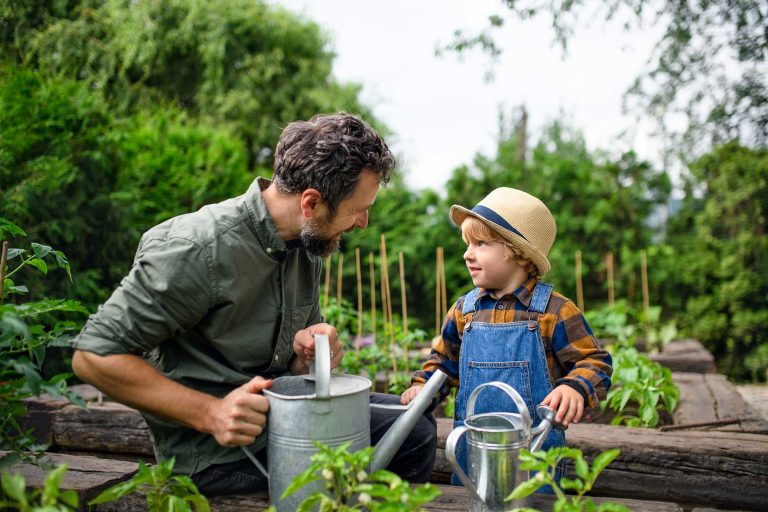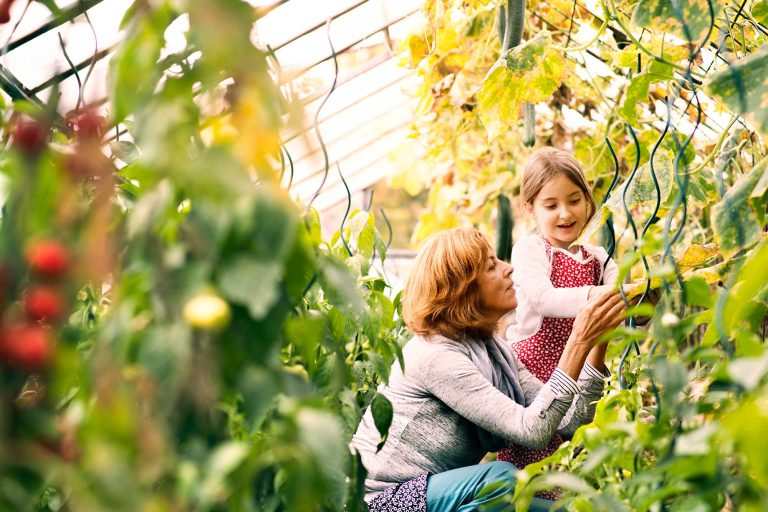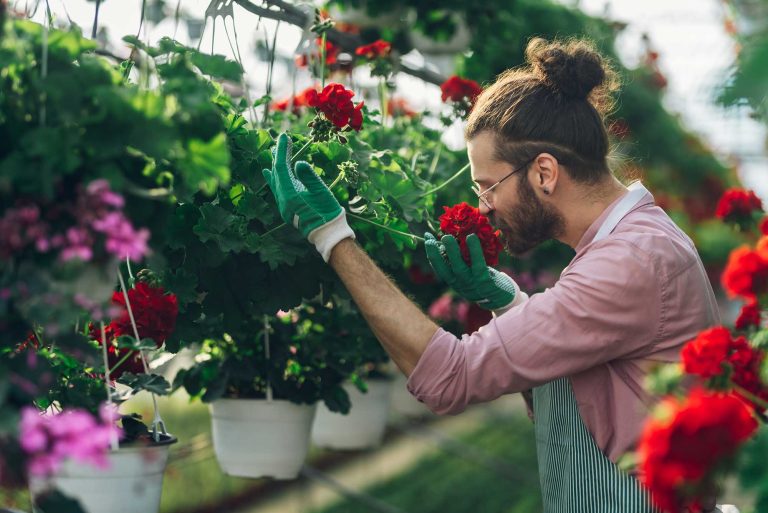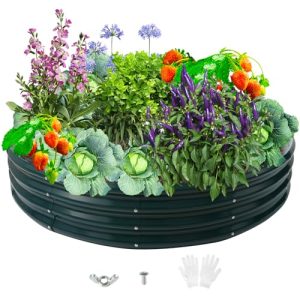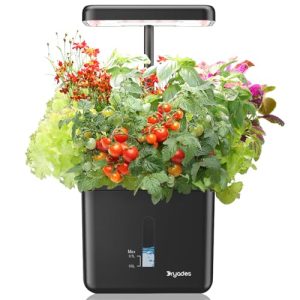Imagine stepping into your backyard and being greeted by the vibrant colors and fresh scents of a beautifully designed vegetable garden. The good news is, creating your own garden oasis is within reach, and it can be a deeply rewarding experience.
Whether you’re a seasoned gardener or a complete beginner, the way you design your vegetable garden can make all the difference in how enjoyable and successful your gardening journey will be. You might wonder where to start or what factors to consider.
This article will guide you through the essentials of garden design, ensuring that you maximize space, aesthetics, and productivity. You’ll learn how to choose the right layout, select the best plants for your climate, and even add a touch of personal style. By the end of this read, you’ll feel equipped and inspired to transform your outdoor space into a flourishing garden that not only feeds your body but also nourishes your soul. Let’s dive in and discover how you should design your vegetable garden to create the perfect blend of beauty and utility.
Garden Layout Ideas
Design a vegetable garden by planning rows or raised beds for easy access and maintenance. Consider sunlight, spacing, and companion planting to optimize growth. Mix different vegetables to enhance soil quality and pest control naturally.
Designing your vegetable garden layout can be an exciting yet challenging task. The way you arrange your garden can significantly impact its productivity and maintenance needs. Whether you’re a novice or an experienced gardener, understanding different layout ideas can help you make the most of your space.Raised Beds Vs. Ground Beds
When considering raised beds, think about the benefits of better drainage and soil quality control. Raised beds are excellent if you have poor soil conditions, as they allow you to fill them with a high-quality soil mix. They also elevate your plants, making it easier to manage them without bending over. On the other hand, ground beds might be more suitable if you have a larger area or a tight budget. They allow for larger crops like corn or pumpkins that need more space. Ground beds can be more natural in appearance, blending seamlessly into the landscape.Square Foot Gardening
Square foot gardening is a method that maximizes efficiency and minimizes waste. By dividing your garden into square-foot sections, you can plant different crops in each square, making it easier to manage and rotate. This method is particularly useful if you’re working with limited space, as it allows you to grow a variety of vegetables in a compact area. Imagine having a salad-ready garden where each square foot hosts a different ingredient. It encourages you to think critically about space and encourages the use of companion planting to naturally deter pests. Are you ready to experiment with this method and see how diverse your vegetable garden can become?Choosing The Right Location
Selecting an ideal spot for your vegetable garden ensures healthy growth. Pick a location with ample sunlight and good drainage. Ensure easy access to water and avoid areas prone to strong winds.
Designing a vegetable garden can be an exciting adventure. One of the most crucial steps is choosing the right location. This decision will impact everything from growth rates to the health of your plants. Let’s explore the essential factors to consider.Sunlight Requirements
Sunlight is the lifeblood of your garden. Most vegetables thrive in full sun, needing at least six to eight hours of direct sunlight daily. Observe your chosen area at different times of the day to ensure it receives ample light. You might have to trim a few tree branches or relocate patio furniture to maximize exposure. If your space is limited, consider vertical gardening techniques to capture more sunlight.Soil Quality Assessment
Healthy soil is the foundation of a successful vegetable garden. Start by checking if your soil is loamy, sandy, or clay-heavy. Loamy soil, rich in organic matter, is ideal for most vegetables. Test your soil’s pH level using a simple kit from a local gardening store. Vegetables generally prefer a pH between 6.0 and 7.0. Adjusting soil conditions with compost or other organic materials can enhance its fertility. Remember, the right soil can turn a small space into a bountiful garden. So, are you ready to dig deep and transform your patch into a thriving vegetable haven?Selecting Vegetables
Designing a vegetable garden involves selecting the right vegetables for your space and climate. Choose varieties that match your soil type and sunlight. Consider planting easy-to-grow vegetables like tomatoes, lettuce, and carrots for a successful harvest.
Selecting the right vegetables for your garden can be exciting. It sets the stage for a rewarding gardening experience. Choosing wisely ensures healthy growth and a bountiful harvest. Let’s explore how to make the best selections for your vegetable garden.Climate Considerations
Your local climate plays a key role in vegetable selection. Some plants thrive in warm weather, others prefer cooler conditions. Know your area’s last frost date. It helps in planning planting times. Consider sun exposure too. Most vegetables need full sun for at least six hours daily. Check your garden’s sunlight pattern. This influences which vegetables will do well.Popular Vegetables To Grow
Many vegetables are popular for their easy growth and taste. Tomatoes are a favorite for their versatility and flavor. They need plenty of sun and warm temperatures. Carrots are another great choice. They require loose, sandy soil for their roots. Leafy greens like spinach and lettuce grow quickly and can be harvested continuously. Consider cucumbers for their refreshing crunch. They need vertical space to climb. Choose vegetables that you love to eat. It makes gardening more satisfying.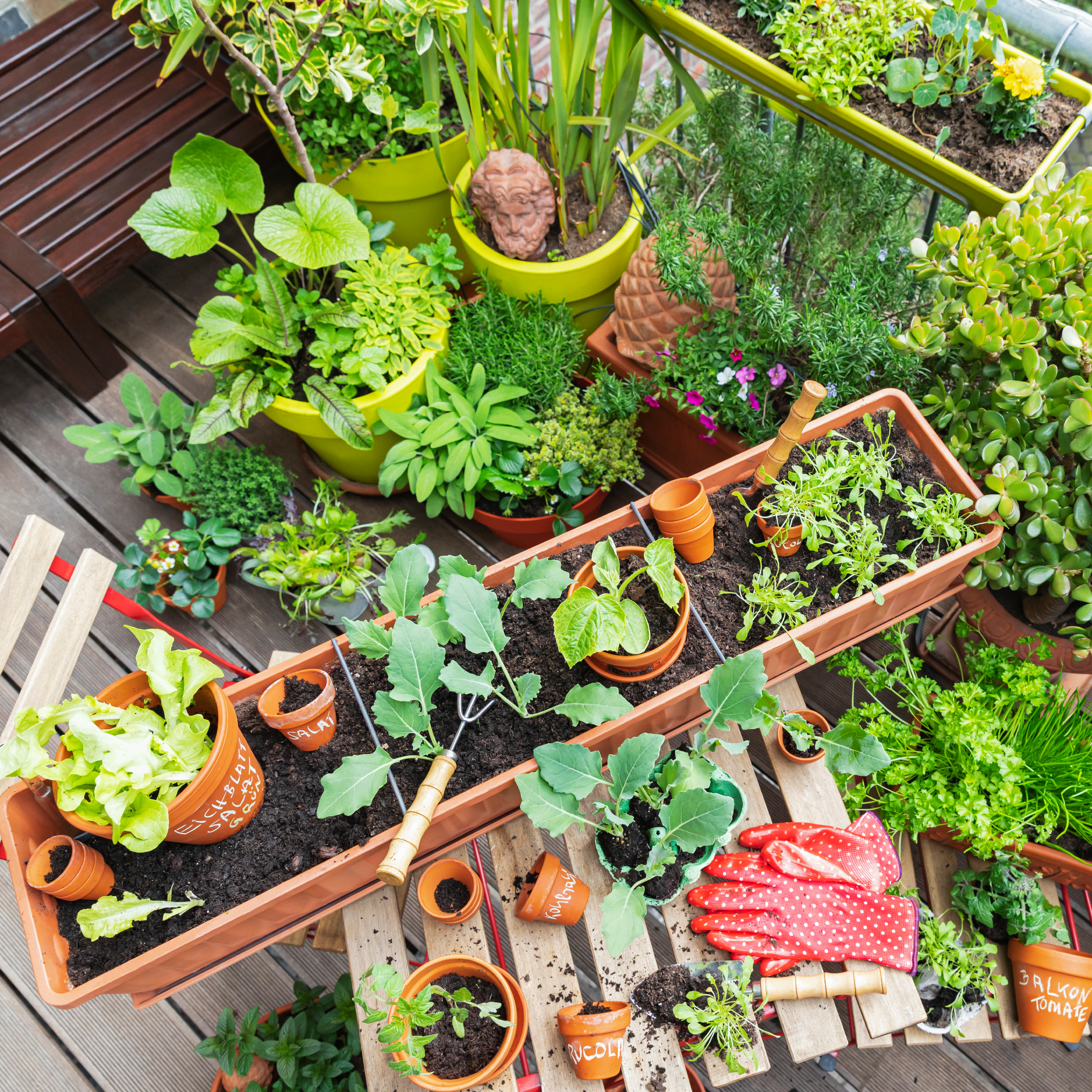
Credit: www.gardeningknowhow.com
Planting Techniques
Designing a vegetable garden requires thoughtful planting techniques. These techniques can enhance growth and improve yields. Understanding different strategies can make a significant difference in your garden’s success.
Companion Planting
Companion planting involves growing certain plants together. Some plants benefit each other by repelling pests or attracting beneficial insects. For example, marigolds can deter harmful bugs from your tomatoes. Beans enrich the soil with nitrogen, benefiting corn and squash. Planning plant pairs can maximize space and boost productivity.
Crop Rotation Benefits
Crop rotation means changing the location of crops each year. This prevents soil depletion and pest buildup. Different plants absorb different nutrients. Rotating crops helps maintain soil balance. It also reduces the risk of diseases. This technique ensures healthier plants and better yields over time.
Watering Strategies
Designing a vegetable garden involves choosing efficient watering strategies. Drip irrigation saves water and keeps plants healthy. Soaker hoses provide consistent moisture, reducing evaporation.
Watering your vegetable garden efficiently is key to promoting healthy plant growth and optimizing water use. Thoughtful watering strategies not only help your garden thrive but also contribute to water conservation. Whether you’re aiming for lush leafy greens or juicy tomatoes, understanding how to water your garden properly can make all the difference.Drip Irrigation Systems
Drip irrigation systems are a game-changer for gardeners who wish to save time and water. These systems deliver water directly to the base of each plant, minimizing evaporation and ensuring that roots receive ample moisture. I once installed a drip system in my garden, and it was fascinating to see my vegetables flourish with fewer resources. The beauty of drip irrigation is in its simplicity and efficiency. You can set timers to water your garden at optimal times, such as early morning or late evening, when evaporation rates are lower. This approach not only conserves water but also reduces the risk of overwatering, which can harm plants.Water Conservation Tips
Conserving water in your garden isn’t just good for the environment; it can also reduce your water bill. One effective strategy is to mulch around your plants. Mulch helps retain soil moisture, keeping your plants hydrated longer. Consider collecting rainwater in barrels to use for watering. It’s a sustainable option that takes advantage of natural resources. I remember setting up a rain barrel and being surprised by how much water it collected over just a few rainy days. Another simple yet effective tip is to water deeply but less frequently. This encourages roots to grow deeper, making your plants more resilient to drought. Have you ever noticed how some plants seem to thrive even when you forget to water them for a few days? That’s often due to strong, deep root systems.Pest Management
Design a vegetable garden with pest management in mind. Companion planting can deter harmful insects naturally. Maintain plant health by using organic pest control methods and ensure proper spacing for air circulation.
Designing your vegetable garden is a delightful task, filled with dreams of fresh produce. Yet, the reality of pests can quickly turn that dream into a nightmare. Crafting an effective pest management strategy is crucial to maintaining a healthy, thriving garden. But how do you keep those pesky invaders at bay without resorting to harsh chemicals?Natural Pest Control
Natural pest control methods are not only eco-friendly but also safe for your family and pets. Start by inviting beneficial insects into your garden, like ladybugs and praying mantises, which feast on harmful pests. Planting companion plants such as marigolds and basil can naturally deter unwanted bugs while adding beauty and fragrance to your garden. Mulching is another effective technique. It helps retain moisture, suppress weeds, and create a barrier against pests. Have you tried using neem oil or diatomaceous earth? These are great natural options to protect your plants without damaging the ecosystem.Identifying Common Pests
Knowing your enemy is half the battle. Spend some time observing your garden to identify common pests. Are aphids clustering on your leafy greens? Or are cabbage worms munching away at your brassicas? Keep a close eye on plant health and look for signs such as holes in leaves, discolored foliage, or a sticky residue. Using a magnifying glass can help you spot smaller pests. Once you know what you’re dealing with, you can tailor your pest management strategies more effectively. Does your garden have a history of specific pests? Document these encounters in a gardening journal. This can guide you in preparing early defenses each season, saving you time and frustration. By understanding and implementing these strategies, you can ensure a bountiful harvest while keeping your garden a safe haven for all its inhabitants. How will you safeguard your garden against pests this season?Seasonal Planning
Seasonal Planningis an essential aspect of designing your vegetable garden that ensures year-round productivity and enjoyment. As the seasons change, so do the needs of your plants. By planning ahead, you can make the most of each season’s unique offerings and challenges. Whether you’re eagerly awaiting the first sprouts of spring or preparing your garden for the winter chill, having a seasonal strategy can transform your gardening experience. Let’s dive into how you can effectively plan for the seasons in your vegetable garden.
Spring Planting Guide
Spring is the perfect time to refresh your garden with vibrant new growth. Start by assessing your soil’s condition after the winter months. Is it dry, compacted, or rich with nutrients? A simple soil test can provide valuable insights. Once you’re ready, consider planting hardy vegetables like peas, lettuce, and radishes. These thrive in cooler temperatures and can be among the first to grace your garden.
Think about succession planting to maximize your space. As one crop finishes, have another ready to take its place. This keeps your garden productive throughout the season. Keep an eye on frost dates, ensuring you plant after the danger has passed. You wouldn’t want your tender plants to suffer from unexpected cold snaps.
Winterizing Your Garden
Winterizing is crucial for protecting your garden during the colder months. Begin by clearing out dead plants and debris, which can harbor pests and diseases. Mulch your garden beds to insulate the soil, helping retain moisture and suppress weeds. Consider planting cover crops, like clover or rye, to enrich the soil and prevent erosion.
Think about adding structures like cold frames or row covers to extend the growing season for hardy vegetables. Have you ever tried overwintering certain crops? Garlic, onions, and carrots can be planted in the fall and harvested the following spring. This technique can give you a head start as the season changes.
Reflect on last year’s challenges. Did you struggle with plant diseases or pest invasions? Use this time to plan for preventative measures. With thoughtful winterizing, you can set the stage for a flourishing garden come spring.

Credit: www.youtube.com

Credit: www.youtube.com
Frequently Asked Questions
How Do I Start Designing My Vegetable Garden?
Begin by choosing a sunny location with well-drained soil. Plan the layout considering space for each plant. Use raised beds or containers for efficient water management. Factor in the mature size of plants for proper spacing. Prioritize planting vegetables that you enjoy and that suit your climate.
What Is The Best Layout For A Vegetable Garden?
A grid layout maximizes space and simplifies maintenance. Use raised beds to improve drainage and access. Consider companion planting to boost growth and deter pests. Vertical gardening can save space and increase yield. Ensure paths are wide enough for easy access during planting and harvesting.
How Do I Choose Vegetables For My Garden?
Select vegetables based on climate, soil type, and personal preference. Consider the growth season and harvest time. Research which varieties grow best in your area. Opt for disease-resistant and high-yielding plants. Start with easy-to-grow options like tomatoes, lettuce, or peppers if you’re a beginner.
What Factors Influence Vegetable Garden Design?
Sunlight, soil quality, and water availability are key factors. Space constraints influence plant choices and layout. Consider pest control and crop rotation for sustainable gardening. Accessibility for maintenance and harvesting is essential. Local climate impacts plant selection and growth periods.
Conclusion
Designing a vegetable garden involves creativity and planning. Start small with easy plants. Consider sun and shade spots. Use raised beds for better drainage. Plan paths for easy access. Think about watering needs. Choose plants that grow well together. Add compost for soil health.
Label plants to remember what’s growing. Enjoy the process and learn as you go. Gardening is fun and rewarding. Your efforts will pay off with fresh vegetables. A beautiful garden awaits your care and vision. Happy gardening!

